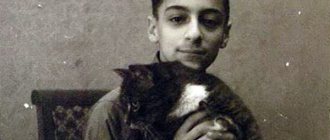Jenner refused to become a priest
Edward Anthony Jenner was born in the late spring of 1749 in Berkeley, England. He was the third child in the family. His father was a priest, so the future scientist received a very good primary education.
Initially, Edward did not have a burning desire to become a clergyman. As a twelve-year-old teenager, he was already inclined to study natural phenomena and knew Greek and Latin.
Despite his father's wishes, the guy began to study medicine and was preparing to become a surgeon. His teacher was a famous doctor from Sudbury. It was here that he was able to notice for the first time that peasants who had cowpox were immune to the natural, more dangerous form of the disease. In any case, this was the belief among British farmers in those days. The young physician studied these properties of smallpox for several years.
In 1770, Jenner completed his studies in Sudbury and decided to move to the capital of Great Britain. There he began to study with the physician and anatomist D. Hunter.
Naturalist and surgeon
The aspiring scientist began to study anatomy, visited patients in one of the hospitals and created a system for classifying geological and zoological samples that were brought by the famous traveler D. Cook from a voyage around the world.
In 1773, Edward was offered to stay in the capital, but he decided to return to his native Berkeley, where he became a practicing physician and surgeon. It was there that he turned from a novice doctor into a famous person. At the same time, he became famous not only as a specialist in the field of medicine, but also as a naturalist.
A few years after returning to Berkeley, he wrote an article about cuckoos and their habits. English scientists, having read Jenner's scientific essay, decided to accept him into the Royal Society of London.
Marriage
Despite his active scientific work, Jenner decided to get married. And a little later, three children were born into his family. He also acquired an estate in his hometown.
Since Jenner's wife was in poor health, the whole family went to Cheltenham in the summer. The doctor also helped people in this area, and when he officially became a doctor of medicine, his practice expanded.
Every minute he was ready to rush to the patients. His help was necessary both during the day and at night. At that time, Jenner was the only doctor in this territory.
Often, a talented physician saw cases of death from smallpox. At that time, he was completely powerless, as were the vast majority of doctors.
In search of truth
In those days it was already known that cowpox was not at all dangerous for an ordinary person. Only small blisters could appear on the skin of the patients' hands. Jenner thought about this phenomenon and began to study the relevant books, on the pages of which there were descriptions of folk remedies for combating such diseases.
The doctor learned that residents of Georgia and India constantly used the so-called. “vaccinations” against a terrible disease - smallpox. The Chinese suggested that the patient put cotton wool in his nose, which should be moistened with the pus of a smallpox patient. African tribes used a different method. Using a needle, a thread containing pus was pulled through the skin. In some countries, smallpox crusts were ground into a fine powder, and then it was blown into the nostrils or rubbed into the skin.
Many people, after such protective vaccinations, suffered a terrible disease in a fairly mild form. At this price, they still managed to acquire immunity to smallpox.
Biography
Edward Jenner was born on May 17, 1749 in England in the town of Berkeley, Gloucestershire. His father, the Reverend Stephen Jenner, was vicar of Berkeley, so Edward received a good primary education.[2] He received his medical education in London. At the age of fourteen he was sent to study with local surgeon Daniel Ludlow, and he continued his studies in London. There he studied anatomy and worked with patients, then became a practicing physician and surgeon in his native Berkeley. In 1792, Jenner received a medical degree in Folk Remedies from the University of St Andrews.
The people knew well that cowpox is not dangerous to humans: it leaves only light traces of blisters on the skin of the hands - and at the same time, those who had cowpox almost did not get smallpox. The observant doctor thought about this interesting phenomenon. He began to study medical books that described folk remedies for combating infectious diseases. People have long been searching for a means of protection against this terrible disease. In China, pieces of cotton wool moistened with the pus of a smallpox patient were placed in the nose. Among the peoples of Africa, a thread moistened with smallpox pus was pulled through the skin with a needle. In a number of countries, smallpox crusts were ground into powder, which was rubbed into the skin or blown into the nose. After such “vaccinations,” many people fell ill, spreading a severe epidemic disease. Others actually suffered from smallpox in a mild form and at this price acquired immunity. Everything depended on the degree to which the smallpox pathogen lost its pathogenicity in the dried crust.
Gaining experience
For many years attempts have been made to find acceptable ways to prevent smallpox. It has long been known that a person who survives this disease develops immunity and will not get sick again. In the east, this observation led to the practice of inoculating healthy people with tissue taken from a person who had suffered a mild form of smallpox. This was done in the hope that a person vaccinated in this way would himself become ill with only a mild form of smallpox and, after recovery, would gain immunity.
The practice was brought to England in the early eighteenth century by Lady Mary Wortley Montagu and became a common procedure there many years before Jenner. Jenner himself was vaccinated with smallpox at the age of eight. However, this preventive measure had a significant drawback: a large number of people vaccinated in this way fell ill not with a mild form of smallpox, but with a dangerous one, which left them disfigured. But in fact, two percent of those vaccinated died. It was clear that a different method of prevention was required.
Comparing all this information, carefully considering it, observing cases of smallpox in humans and animals, Jenner gradually came to the idea that it was possible to artificially infect a person with cowpox and thereby protect him from natural disease.
Experiment
The peasant woman Sarah Nelsis, who contracted cowpox, developed several pustules on her hand. On May 14, 1796, Jenner rubbed their contents into a scratch on the body of an eight-year-old boy, James Phipps. The boy developed a slight malaise, which went away after a few days. A month and a half later, James Phipps was vaccinated with human smallpox, but the disease did not develop. A few months later a second smallpox vaccination was given, and five years later a third, with similar results.
Reaction
Contemporaries treated Jenner's research with caution. Thus, in 1798, the Royal Society of London refused to publish in its Proceedings his work “An Inquiry into the Causes and Effects of the Cow-Pox” [3] with the warning “not to risk your reputation by submitting to a learned body anything that appears so divergent from established knowledge” [4 ], and Jenner had to print a brochure at his own expense, which outlined the experience of 25 years of research. Cowpox vaccinations were met with indignation by the clergy. But the need to fight the disease forced people to increasingly use Jenner’s experience. The Duke of York declared smallpox vaccination according to Jenner's method mandatory for the army, and the Duke of Clarence (the future King William IV) for the navy. Jenner offered his vaccination technique to the whole world and made no attempt to derive personal benefit from it. In 1802, recognizing Jenner's outstanding services, the British Parliament awarded him a prize of 10,000 pounds sterling, and in 1807 awarded him a second prize of 20,000 pounds.[5] In 1803, the Royal Jennerian Society and the Smallpox Vaccination Institute (Jenner Institute) were founded in London. Jenner became its first and lifelong leader.
Last years
The feat of the English scientist gained recognition from all mankind; he was accepted as an honorary member by many scientific societies in Europe. Edward Jenner became an honorary citizen of London, he was given a bronze monument in Trafalgar Square (later moved to Kensington Gardens), and was awarded a large gold medal by the London Medical Society.
Edward Jenner died on January 26, 1823 from a stroke.
The clue
By and large, a similar practice appeared on the islands of Great Britain at the beginning of the 18th century. And in this regard, Lady Mary Wortley Montagu became a pioneer. Vaccination was a common procedure throughout the country. Jenner himself was vaccinated against smallpox when he was eight years old. True, such a preventive measure had a serious drawback, namely, many vaccinated people fell ill with a dangerous form, not a mild one. At the same time, the traces of the disease turned out to be monstrous - the patients were disfigured. Also, about 2% of those vaccinated died. In a word, it became clear that another method of prevention was needed.
Jenner tried to compare all this data and observed cases of the disease not only in humans, but also in animals. He came to the conclusion that a person could be artificially infected with cowpox, thereby preventing infection by the causative agent of the natural form of the disease.
Edward Jenner and the discovery of vaccination
In 1796, Jenner diagnosed one of the peasant women with “cowpox.” A series of pustules appeared on the unfortunate woman’s hand. He took the liquid from them and decided to rub it into a scratch on the body of a boy, James Phipps, who was eight years old. By this time, the doctor became very attached to the child and loved him like his own son. As a result, James suffered from the disease in the same mild form as the peasant woman.
The test subject began to feel slightly unwell. After a few days it went away. A month and a half later, Jenner decided to experiment. The boy was infected with the material that was taken from a smallpox patient. For three days, the doctor awaited the results with tremendous excitement. Fortunately, the disease did not develop. Thus, the boy managed to acquire resistance to the deadly smallpox.
Thus, Edward Jenner, whose biography should be known to everyone, turned out to be the progenitor of a completely new science, which is now called “immunology.” And he began to call the vaccination itself vaccination (from the Latin word “vacca” - “cow”).
Note that after some time the next smallpox vaccination was carried out, and a few years later - the third. And with the same successful results.
Edward Jenner, who had finally conquered smallpox, realized that his experiment was more than successful. With enviable activity, he applied vaccinations among the inhabitants of his town and the surrounding area. And the doctor published all his results in an article.
Edward Jenner, boy and smallpox
E. Jenner was a classic scientist of that time - he should rather be called a natural scientist. He was interested in absolutely everything: he was engaged in the classification of new species that the legendary Captain James Cook brought to England, experimented with human blood, studied geology and aeronautics (and even built a hydrogen balloon himself and flew 12 miles on it), was interested in the behavior of cuckoos, migration birds and hibernating hedgehogs. Thanks to his medical education, Jenner improved the method of obtaining the so-called tartar emetic. Along the way, he played the violin in a local club and wrote poetry.
Thanks to such curiosity, Jenner took a step that subsequently brought humanity to a new level in the field of medicine. He thought about a fact known to any milkmaid of that time: if you get cowpox, then the deadly black smallpox will not be scary. In 1796, Jenner took a sample of fluid from pustules on the hands of a young milkmaid who had cowpox and injected it into 8-year-old James Phipps. After 1.5 weeks of mild fever and enlarged lymph nodes, the boy recovered. And after 2 months, Jenner injected him with a sample of liquid from the tissues of a patient with real, black smallpox. And nothing happened, the child did not get sick.
The scientist repeated the experiment 23 times and after 2 years he published the results of his research, where for the first time he called the procedure he performed vaccination. In the same 1798, vaccination against smallpox was introduced into the English army and navy, which quickly led to a 3-fold reduction in mortality from smallpox.
The new method became the main work of Edward Jenner's life. Surprisingly, he made no attempts to get rich from it, although his private practice and personal life began to decline amid his passion for vaccination. In 1802, the British Parliament awarded him 10 thousand pounds sterling for developing a vaccination method, and 5 years later decided to issue another 20 thousand. But Jenner did not receive this money. Despite the fact that his technique was attacked and ridiculed, he continued to work. Gradually, vaccination replaced variolation. And in 1840, the latter was banned in England.
Consequences of a successful experiment
Jenner's successful experiment brought him worldwide fame. He was invited to audiences by crowned persons. One of the dukes ordered that all soldiers and sailors be vaccinated with smallpox.
In 1801, the English Parliament decided to allocate ten thousand pounds sterling to the brilliant doctor, and six years later - twice as much. Over the years, Edward Jenner, about whom it is not at all difficult for students to write an essay about him, since there is a huge amount of information about him, received a huge number of awards, including a “belt” from five Indian tribes.
Thus, the practice of vaccination has become widespread in all countries. Thus, one of the most famous philanthropists and Quakers, D. Lettsome, managed to introduce this method of prevention to North America. Presidents such as Adams and Jefferson took part in popularizing vaccination (the latter personally vaccinated his family). A couple hundred more American families followed.
And in 1803, corresponding institutions appeared in the capital of Foggy Albion. It was about the Royal Jenner Society and the Smallpox Vaccination Institute (Jenner Institute). By the way, the doctor was its first and lifelong president.
Notes
- Lundy DR
The Peerage - ↑ 12
Who Named It? (English) - ↑ 12
Encyclopedia Brockhaus (German) - BNF identifier (French): open data platform - 2011.
- Jenner Edward // Encyclopedic Dictionary of Brockhaus and Efron: in 86 volumes (82 volumes and 4 additional). - St. Petersburg, 1890-1907.
- Jenner; Edward (1749 - 1823); Physician // Website of the Royal Society of London (English)
- Les membres du passé dont le nom commencement par J (French)
- About Edward Jenner (inaccessible link). The Jenner Institute
. Retrieved January 12, 2013. Archived February 21, 2015. - D Baxby.
The genesis of Edward Jenner's Inquiry of 1798: a comparison of the two unpublished manuscripts and the published version // Medical History. - 1985-4. - T. 29, issue. 2. - pp. 193-199. — ISSN 0025-7273. - https://www.jstor.org/stable/20778029
- https://books.google.com/books?id=z2zMKsc1Sn0C&pg=PA80
- Svyatlovsky V.V., 1891.
- Quote in English: “...ought not to risk his reputation by presenting to the learned body anything which appeared so much at variance with established knowledge...”. See the following book: John Baron.
The Life of Edward Jenner (unspecified). - London: Henry Colburn, 1838. - T. II. — P. 168. - https://books.google.com/books?id=tbEwDwAAQBAJ&pg=PA162
- About Edward Jenner (unspecified)
(unavailable link). The Jenner Institute. Retrieved March 14, 2020. Archived February 21, 2020. - "Edward Jenner Grafting His Son", Giulio Monteverde, 1873 Archived August 4, 2020 on the Wayback Machine - cataloged by the National Gallery of Modern Art
- Jenner (undefined)
.
Gazetteer of Planetary Nomenclature
. International Astronomical Union (IAU) Working Group for Planetary System Nomenclature (WGPSN) (October 18, 2010). Retrieved January 28, 2020. Archived January 28, 2020.
Vaccination in the Russian Empire
In the 18th century, information about Jenner and his successful experiment came to Russia. Moreover, the death of fifteen-year-old Emperor Peter II forced the Russian court to pay close attention to vaccination technology.
In 1768, the famous British smallpox vaccinator, doctor Dimodol, arrived in the northern capital at the invitation. He managed to vaccinate the Russian Empress Catherine the Great, as well as the heir to the throne, the future ruler of the empire, Paul. It was from then on that “smallpox vaccination centers” began to appear in the country.
And in 1801, the first smallpox vaccination in the state took place using Jenner’s method. It was conducted by the famous doctor E. Mukhin. The name of the vaccinated teenager is Anton Petrov. The vaccination gave a positive result, and in honor of this historical event they decided to rename the boy Vaccinova.
Opponents of the method
Be that as it may, a number of Jenner’s contemporaries treated his experiment and research with caution. Thus, members of the Royal Society in London returned his work on cowpox. At the same time, they warned Jenner that he was compromising his scientific reputation with such articles. As a result, the doctor himself printed this brochure at his own expense.
By the way, the clergy was also indignant at the very fact of the existence of preventive vaccinations. However, the need to combat a fatal disease forced people to use the Jenner method even more widely.
Literature
Essays
- Edward Jenner.
An Inquiry Into the Causes and Effects of the Variolae Vaccinae, A Disease Discovered in Some of the Western Counties of England, Particularly Gloucestershire, and Known by the Name of the Cow Pox. — London, 1798. - Edward Jenner.
Further Observations on the Variolæ Vaccinæ Or Cow Pox. — London, 1799.
Bibliographic literature
- Svyatlovsky V.V.
Edward Jenner. His life and scientific activities. - SPb.: type. Y. N. Erlich, 1891. The file at the following link is in the public domain: [1] - John Baron.
The Life of Edward Jenner (unspecified). - London: Henry Colburn. - V.P. - Biography of Jenner. Magazine “Sovremennik”, vol. 25, St. Petersburg, type. E. Fisher, 1841.
- A collection of articles relating to sciences, arts and literature, borrowed from various foreign periodicals of 1823, 1824, 1825. - Moscow: University Printing House, 1826. - P. 544-551. — 580 s.
- Dwarf L. N.
Edward Jenner: (on the 150th anniversary of the discovery of smallpox vaccination) // Pediatrics. 1946. No. 4.
- Media files on Wikimedia Commons
Other discoveries
Edward Jenner managed to make other important, but less well-known discoveries. So, when he performed autopsies, he came to the idea that “angina pectoris” was a disease of the coronary arteries. He also studied the migration of birds and noticed that the herald of the morning dawn was not a lark at all, but a robin.
In 1816, the brave experimenter decided to finally settle on his estate. He continued to practice medicine and was engaged in new scientific research. Jenner Edward, whose discoveries saved the world, died in 1823. The cause of death was stroke.
Memory
The sculpture “Edward Jenner vaccinates his son” by Giulio Monteverde (1873)
In France, in Boulogne, there is a beautiful marble monument by Monteverdi (according to other sources, this is a sculpture of 1873 by Giulio Monteverde in the Roman National Gallery of Modern Art[16]) - a story about how to vaccinate a child with smallpox. The sculptor conveys the greatest tension of Jenner's thoughts, his concentration on the operation, which became his life's work. This is a story about the joy of victory of the mind and heart. If Jenner is the author of the discovery, then little James is the co-author, although he did not even know what he helped and what he risked.
In 1970, the International Astronomical Union named a crater on the far side of the Moon named after Edward Jenner.[17] In Russia, in the city of Ostrov, Pskov region, there is a Jenner street and lane.











